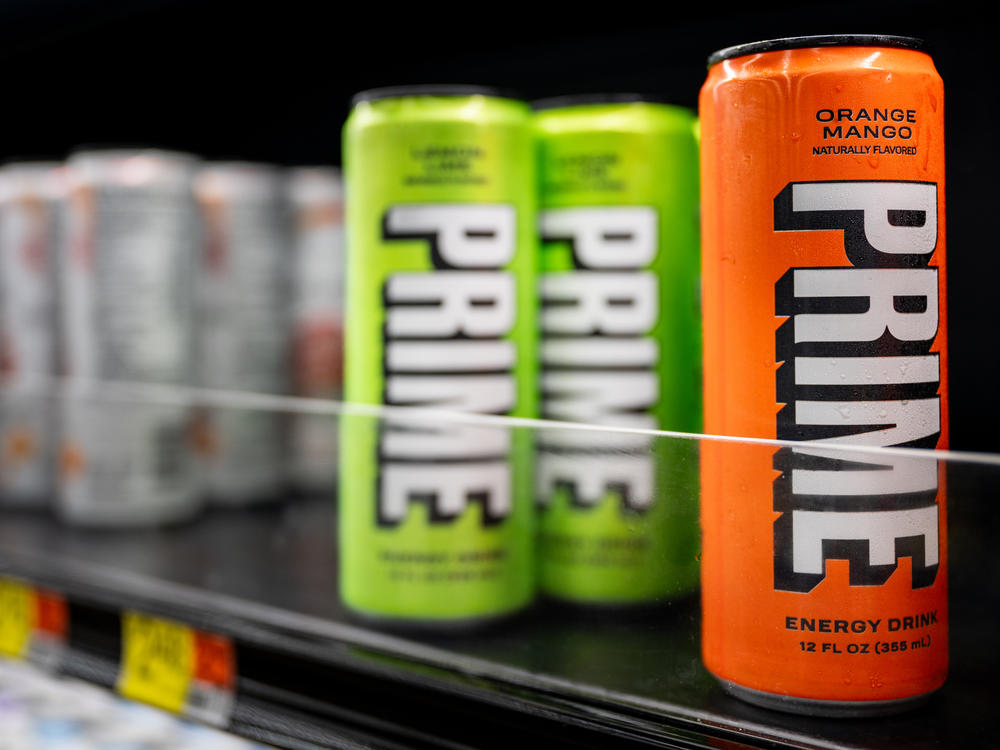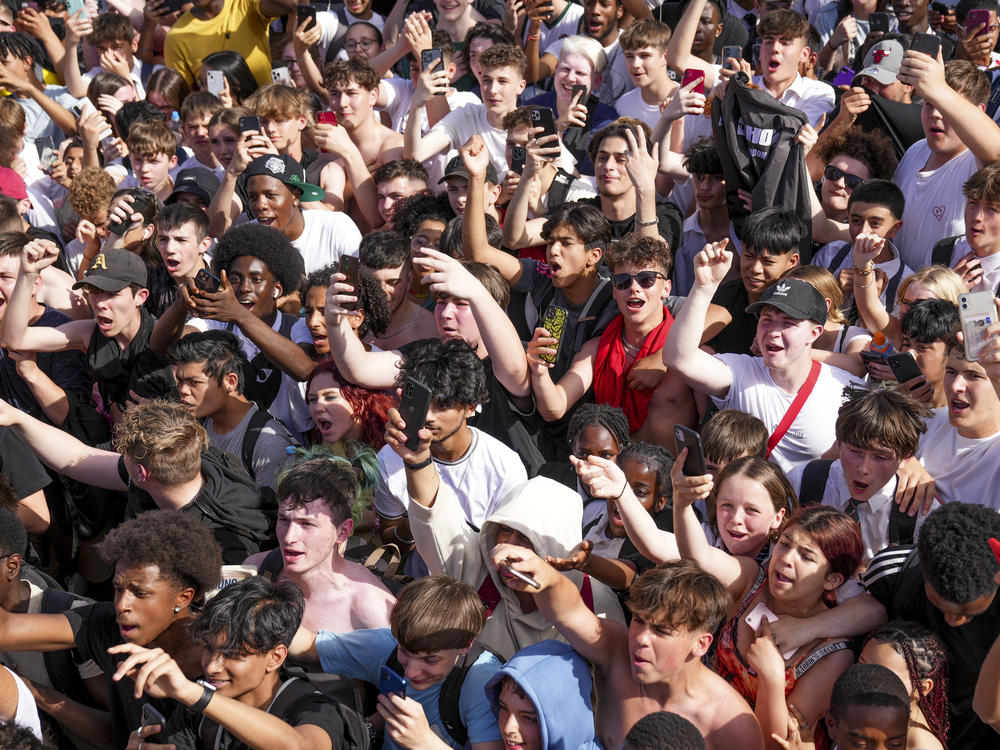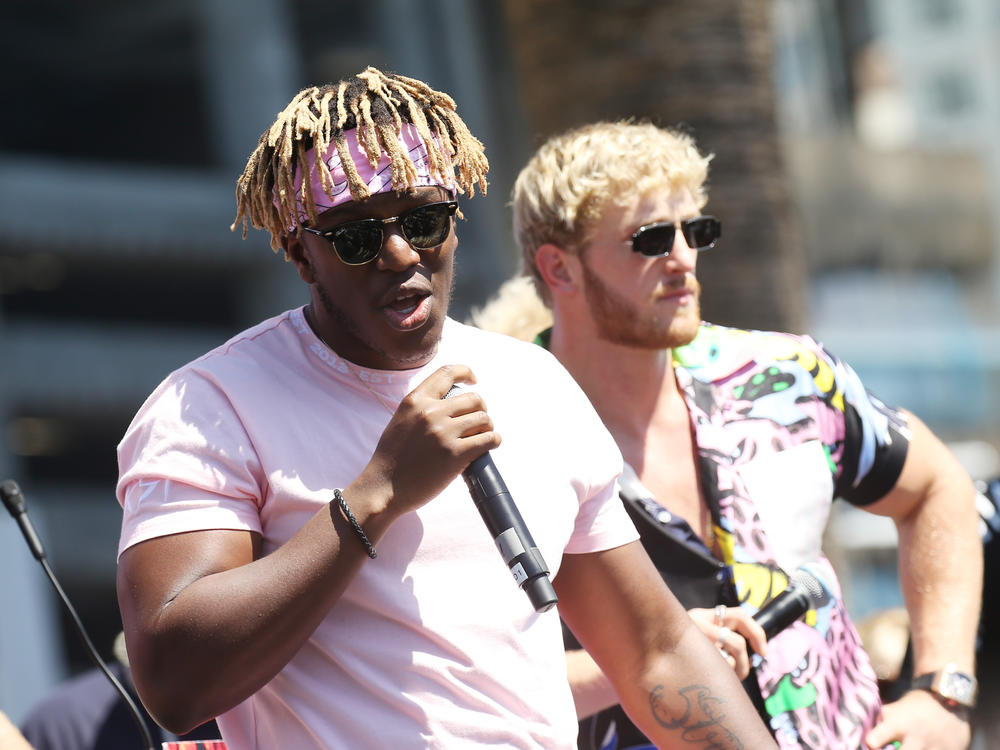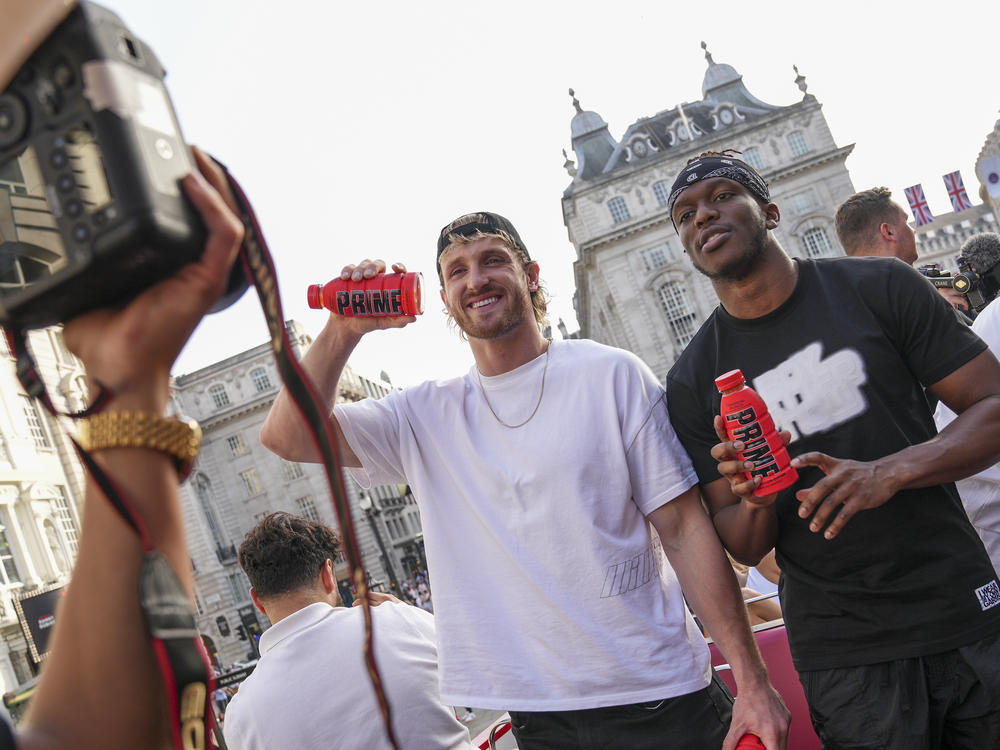Section Branding
Header Content
What to know about Prime, the Logan Paul drink that Sen. Schumer wants investigated
Primary Content
It's fruity flavored, it pops in TikTok videos and, according to Senate Majority Leader Chuck Schumer, it poses a serious risk to the health of America's teenagers.
Prime energy drinks (stylized by the company as PRIME), a growing status symbol among Gen Z'ers, are facing backlash this week after Schumer, D-N.Y., called on the U.S. Food and Drug Administration to investigate the products, saying they contained more caffeine than is safe for child consumption.
Here's what to know about the hype and the risks.
What is Prime?
The energy drink is one of three products sold by Prime, a brand owned by Louisville-based Congo Brands and promoted by YouTubers Logan Paul and Olajide Olayinka Williams Olatunji, who goes by KSI.
Prime bills itself as a purveyor of sports hydration, filling "the void where great taste meets function" and helping one "refresh, replenish, and refuel."
Two of its products are geared towards post-workout recovery, offering Gatorade-esque servings of electrolytes and vitamins. But the third product pledges "energy," which, according to the ingredient label, comes in the form of caffeine — a hefty 200 mg of it per 12 oz can.
A small warning on the back of the product warns it's "not recommended" for those under age 18 or "people sensitive to caffeine."
But in terms of the brand's online marketing — much of which takes the form of social media posts — there's not much visual distinction between Prime's recovery drink and its energy drinks.
Both come in brightly colored packaging, with summery flavors like "Ice Pop" and "Tropical Punch." Both products are available in the U.K., Canada, Australia and the U.S., retailing for around $2.50 per bottle — but that's if you can find them.
Why is Prime so popular?
Since the brand's launch in 2022, Prime products have gained a cult-like following, causing the drinks to fly off shelves in the U.K. or sell for astronomical mark-up prices.
Lucky Instagrammers share images of empty Prime bottles lined up like 2023's equivalent of a prize beanie baby collection, but for rowdy teen males.
When Prime launched in Australia earlier this year, hundreds of hopeful patrons packed in the street, clamoring for a free sample.
Prime has been named the official sports drink of the Los Angeles Dodgers, the Arsenal Football Club and the UFC. FC Barcelona is also rumored to be exploring a contract with Prime to replace its relationship with Gatorade.
"This goes well beyond the value of the drink," says David Craig, a professor of social media communications at the University of Southern California.
For Prime drinkers, holding a can is "a status symbol," Craig told NPR. "It's a symbol of membership in a fan club, a sign of belonging to that community."
And that community is the one that's been built and sustained by the faces behind the brand: Paul and KSI.
Who are Logan Paul and KSI?
The 28-year-old Paul and 30-year-old KSI are primarily known for their YouTube channels, where, combined, they have more than 40 million followers. And if the crowds of fans that show up in real life are any indication, a large share of those followers are teenage males.
Even before Prime came on the scene, Paul faced questions about pandering to a young audience, especially as controversy has proved key to his viral success. He's faced backlash for saying he'd "go gay for just one month," for tasering dead rats and for posting a video of a dead body, a man who'd taken his own life.
"The appeal is this kind of perpetual youth and bad boy flagrancy," Craig says. "It's a trapped-in-adolescence kind of behavior that they've managed to sustain for over a decade."
And it's lucrative, especially when Paul and KSI team up.
Before they were business partners, the two were rivals, trading trash talks on their respective platforms until they met in real life for a boxing match. The fight ended as a majority draw (two judges said the pair tied; a third scored in favor of KSI).
They fought again in 2019, gaining widespread national political attention after Paul said KSI was "on his fifth abortion," causing both sides of the abortion movement to weigh in.
That second fight earned each man no less than $900,000, Forbes reported.
Fast forward to 2022, and the launch of Prime earned $250 million in sales, according to The Washington Post.
Though Prime is owned by Congo Brands, Paul and KSI position themselves as founders and decision-makers, crediting themselves with building the Prime empire.
Why does Schumer want Prime to be investigated?
On Sunday, Schumer held a press conference calling for the U.S. Food and Drug Administration to investigate Prime's energy drink, calling it a "cauldron of caffeine" that posed "serious health concerns" for kids.
Schumer described his announcement as partially a public service warning for parents, taking aim directly at how the product was portrayed online.
"A lot of parents may not have ever heard of it, but their kids have," Schumer said. "That's because Prime is engaged in a vast advertising campaign aimed at kids."
Each 12 oz can of Prime Energy is equivalent to two cups of coffee or roughly six cans of Coca-Cola. The 200 mg of caffeine is significantly more than other energy drink brands, including Red Bull (80 mg per 8.4 oz can) and Monster (160 mg per 16 oz can).
There's no proven safe dose of caffeine for children, according to the American Academy of Child and Adolescent Psychiatry. The group recommends children under 12 avoid all caffeine and those aged 12 to 18 limit their intake to about 100 mg.
At any age, an overconsumption of caffeine can lead to sleep deprivation, anxiety, nausea and lack of appetite, headaches and dizziness, according to the National Institutes of Health.
One child in Wales reportedly underwent cardiac arrest after consuming Prime. And even before Schumer issued his public warning, some schools in the U.K. started banning Prime drinks.
In his letter to the FDA, Schumer outlined four major areas he deemed worthy of investigating: the drink's claims to boost athletic performance and focus, its social-media heavy advertising, its labels and warnings and its "eye-popping caffeine content."
In a statement shared with NPR, Prime said the caffeine level in its energy drink falls "within the legal limit of the countries it's sold in" and that it had "complied with all FDA guidelines before hitting the market."
"As a brand, our top priority is consumer safety, so we welcome discussions with the FDA or any other organization regarding suggested industry changes they feel are necessary in order to protect consumers," the company wrote.
Will the FDA actually investigate? What could come of it?
The FDA told NPR late Monday that it had received the letter, is reviewing the concerns and will respond to Schumer directly.
The agency said it may collaborate with the Federal Trade Commission when it comes to reviewing marketing claims.
Currently, the FDA doesn't have a specific category for energy drinks or impose specific regulations on these products. But under the Federal Food, Drug And Cosmetic Act, companies are responsible for self-monitoring caffeine levels in their product, and ensuring those levels are "safe under the intended conditions of use."
Perhaps the best precedent for how the FDA regulates risky caffeine products is a 2010 controversy surrounding Four Loko, an alcoholic energy drink that sparked outcry after dozens of young drinkers were sickened and some were hospitalized.
The makers of Four Loko voluntarily removed the drink's 156 mg of caffeine after the FDA sent a letter warning that, combined with alcohol, it represented an unsafe additive and that the drinks could be seized under federal law.
Copyright 2023 NPR. To see more, visit https://www.npr.org.




